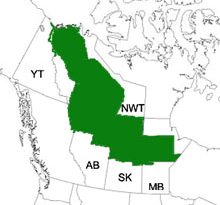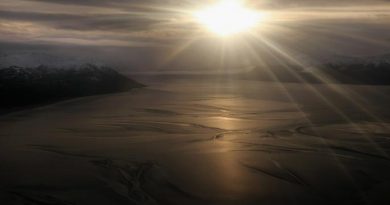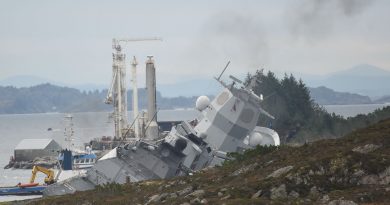Peatlands in Canada’s Northwest Territories store 24 billion tonnes of carbon and are worth protecting, experts say

Our planet is changing. So is our journalism. This story is the second in a series, by CBC North, that examines carbon storage with the N.W.T.’s natural environment. It’s also part of a CBC News initiative entitled Our Changing Planet to show and explain the effects of climate change and what is being done about it.
The N.W.T. is home to nearly one-fifth of Canada’s peatlands, according to a researcher who says they’re an asset worth protecting in the fight against climate change because of their capacity to store carbon.
Lorna Harris, a postdoctoral fellow and ecosystem scientist at the University of Alberta, said peatlands cover about 230,000 square kilometres of land in the N.W.T., and they store 24 billion tonnes of carbon. That’s the carbon equivalent of using nearly 200 billion barrels of oil.
“It is a large portion in the N.W.T., relative to some other provinces,” she said, noting that the Mackenzie River basin, stretching from northern Alberta to the N.W.T., is the second largest expanse of peatland in Canada next to the Hudson Bay Lowlands.
Peatlands are wetland ecosystems filled with organic matter that has collected over thousands of years. They are a type of carbon sink, because through the decaying process, that matter deposits carbon into the surrounding soil and peat, rather than releasing it into the atmosphere.
Peatlands cover swaths of temperate, boreal and subarctic regions and can be found in forests and in permafrost too.
A World Wildlife Fund-Canada (WWF) study unveiled at the Conference of the Parties (COP26) said Canada stores more than a quarter of the world’s soil carbon, and suggests keeping that carbon in the ground — so it doesn’t further exacerbates global warming — is key to the country’s climate efforts.
Harris, the lead author of a separate study published recently in Frontiers in Ecology and the Environment, concludes the biggest threats to northern peatlands are human activities like mining, logging and agriculture, as well as wildfire and permafrost thaw.
N.W.T. peatlands ‘globally significant’
Steven Nitah, a senior advisor to the Indigenous Leadership Initiative and one of lead negotiators in the establishment of the Thaidene Nëné Indigenous Protected Area, said parts of the N.W.T., like its peatlands, are “globally significant” and “provide a nature service that’s definitely required to give us a fighting chance” in the face of climate change.
He said the first thing that needs to be done is to identify those important areas and to work across levels of government — Indigenous, territorial and federal — to protect and manage them.
The federal government has committed to protecting or conserving 25 per cent of Canada’s land by 2025 and working toward protecting 30 per cent by 2030, as part of the country’s efforts to fight climate change and defend vulnerable species and ecosystems.
Nitah said Canada has protected about 15 per cent of its land so far.
“To double that protection, they [the federal government] need to conserve or protect the quantum land roughly the size of Manitoba,” he said, pointing out an opportunity for the N.W.T. to advocate that its lands be protected.
Nitah said the N.W.T. can continue to demonstrate itself as a leader in Indigenous land protection and management by identifying the right areas for protection as the federal government works toward that goal.
Harris also outlined Indigenous stewardship as one of the key solutions for protecting the essential carbon service provided by northern peatlands.
Changes to the carbon market
Another solution for protecting peatlands, highlighted by both Harris and Nitah, would be for the carbon offset market to place a value on their capacity to store carbon.
“You can go in and damage a peatland and then, any reduction in that damage is considered an offset,” said Harris, of the current offset system. “Whereas just leaving the peatland alone, without it being at risk of any damage, there’s no real value given to that.”
Harris said it’s dangerous to only put value on carbon when it’s part of a restoration activity for damage that’s already being done, especially when it comes to peatlands. She also described the carbon stored in peatlands as being “irrecoverable” because it would take roughly 1,000 years for one metre of peatlands to re-accumulate, if it were to be stripped away.
“Restoring them now is not going to gain enough carbon that was lost from the damage that was caused,” she explained.
Putting a value on the carbon service provided by the natural environment could also help fund land protection and management programs in the N.W.T., said Nitah, who pointed out the territory doesn’t have a big enough tax base to fund such projects on its own.
“The responsibility for management certainly is within the Canadian jurisdiction, but the responsibility for paying for it should be global,” he said.
Wildfire a threat to carbon-storing peat and trees
Funding from the carbon offset market could be used for wildfire management practices like vegetation management, said Nitah, which is sometimes also called forest thinning.
Nitah said it’s something Indigenous people have traditionally done to clean the forest floor, to reduce the amount of fuel that a wildfire can burn and to increase biodiversity.
Wildfires are becoming more frequent and more severe because of the world’s changing climate, and they release carbon that is stored in the trees that are burned — but they can also damage the peatlands below.
Harris said if peat is dry at the surface of the ground, it too, will burn.
“I think up to a metre has been lost in some peatlands here in Western Canada,” she said.
Peat fires are notoriously difficult to fight: they are especially smoky, and they can burrow underground, re-emerging days or even months after they appear to have been put out.
Harris said fire can also speed up the rate of permafrost thaw, which releases even more carbon into the atmosphere.
‘A big role to play’
Harris said the N.W.T. government has a “big role to play” in protecting peatlands, because decisions about mining development, oil and gas exploration and forestry are made at the territorial level.
“They should really be developing some kind of management plan for peatlands, or a land-use plan, identifying where … the peatlands are in the region, where they can protect the peatlands, [and] where they can restore peatlands as well.”
Harris also wants to see the federal government increase research funding and implement a national peatland strategy that outlines a set of goals and targets to help guide provinces and territories in their individual decision-making processes.
A main objective, she said, should be not to dig up peatlands or remove the peat that’s inside them.
“Just leave it in place,” she said.
Related stories from around the North:
Canada: Peat fires, like those raging in Siberia, will become more common in Canada, CBC News
Finland: Finland behind on sustainable development goals, Yle News
Greenland: COVID-19 delay, early ice melt challenge international Arctic science mission, The Associated Press
Iceland: Ice-free Arctic summers likely by 2050, even with climate action: study, Radio Canada International
Norway: Norway to expand network of electric car chargers across Arctic, The Independent Barents Observer
Russia: Climate change has prolonged Siberian heat by at least 600 times, say researchers, Eye on the Arctic
Sweden: January temperatures about 10°C above normal in parts of northern Sweden, says weather service, Radio Sweden
United States: Temperatures nearing all-time records in Southcentral Alaska, Alaska Public Media



